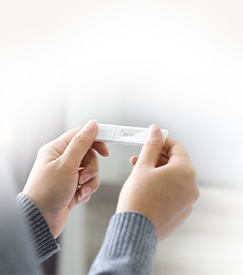
As an adoptive parent, understanding your adoptee’s attachment style is incredibly important in providing parenting that meets their unique needs. For all types of adoptions, domestic and international, infant and non-infant, attachment plays a direct role in how adoptees develop relationships with others, see themselves in context of the world around them, and operate within relationships.
Due to the separation of biological ties that happens in all adoptions, many adoptees will struggle to develop secure attachment even in healthy, loving homes post adoption. In fact, many adoptees will develop anxious or avoidant attachment styles and will need additional support in many of their relationships. Knowing your own attachment style and the attachment style of your adoptee is crucial in providing the support they need to feel safe and seen.
Below are the four different attachment styles:
- Secure Attachment:
Adoptees with a secure attachment style generally feel comfortable in relationships and are able to trust others. They are comfortable both with being close to others and with being independent. They have positive views of themselves and of others.
In infancy, securely attached children feel safe exploring their environment because they know they have a secure base (usually provided by their caregiver) to return to if needed.
In adulthood, securely attached individuals tend to have healthy, balanced relationships. They are able to communicate their needs and feelings effectively and are generally supportive and responsive to their partners.
- Anxious Attachment:
Adoptees with an anxious attachment style often fear rejection and abandonment. They tend to seek a high level of closeness and intimacy in their relationships but may also worry that their needs won’t be met.
In infancy, children with this attachment style may cling to their caregivers and become distressed when separated from them.
In adulthood, people with an anxious attachment style may be overly dependent on their partners and may exhibit behaviors such as jealousy, possessiveness, and constant reassurance-seeking. They may also have low self-esteem and constantly seek validation from their partners.
- Avoidant (Dismissive) Attachment:
Adoptees with an avoidant attachment style tend to suppress their emotions and avoid close relationships. They often value independence and self-reliance over intimacy.
In infancy, children with this attachment style may appear indifferent to their caregivers’ presence or absence.
In adulthood, people with an avoidant attachment style may have difficulty trusting others and may avoid emotional closeness. They may prioritize autonomy and self-sufficiency in their relationships and may have a tendency to withdraw when they feel vulnerable or overwhelmed.
- Disorganized (Fearful-Avoidant) Attachment:
Disorganized attachment combines aspects of both anxious and avoidant attachment styles. Adoptees with this attachment style desire closeness and intimacy but also fear rejection and may feel unworthy of love.
In infancy, children with this attachment style may exhibit contradictory behaviors, such as seeking proximity to their caregiver while also avoiding or resisting contact.
In adulthood, people with a fearful-avoidant attachment style may struggle with trust and may have difficulty forming and maintaining close relationships. They may experience intense emotional highs and lows in their relationships and may alternate between seeking closeness and pushing others away.
What can you do as a parent to help foster secure attachment?
For parents, the goal is to raise children with secure attachment or provide an environment that can help nurture and create secure attachment for children that have anxious, avoidant or dismissive attachment styles already. Below are a few ways to foster healthy attachment:
- Parents should be responsive and attuned to their children meaning they respond promptly and sensitively to their child’s needs, specifically paying attention to their cues for comfort. Additionally, they are attuned to their children’s emotions which helps children feel safe and understood.
- Parents should be emotionally available for their child and create a safe space where their child feels the freedom to express their emotions without fear of judgment or rejection.
- Parents should be consistent and predictable in their parenting by establishing routines and structure in caregiving practices which aids in children feeling safe and stable.
- Parents should encourage exploration and independence by supporting their child’s autonomy and encouraging them to explore their environment. Parents can offer opportunities for age-appropriate independence while providing a secure base for them to return to if needed. Allow children to take risks and make mistakes, while offering guidance and reassurance and reminding them of the secure base they can always return to.
- Parents can utilize positive discipline techniques that focus on teaching rather than punishment. This can be achieved by setting clear and consistent boundaries and respecting your child’s feelings and perspective.
- Parents can create a secure base by being a reliable source of comfort and support for their children. Offering comfort and reassurance during times of distress or uncertainty and helping children develop coping skills is important. Additionally, parents can foster resilience by validating their children’s emotions and providing guidance in navigating challenges.
- Parents can prioritize connection and avenues of meaningful connection with their child through spending quality time and engaging in activities that promote bonding and connection. Additionally, fostering open communication and active listening can strengthen the parent to child relationship.
Regardless of your adoptee’s attachment style, prioritizing connection, trust and safety will always be key. While changing attachment styles from non-secure styles to secure attachment can be challenging and will often take direct work with a therapist or counselor, providing direct support can also assist in this transition. By fostering an environment of empathy, understanding, and consistent support, parents can play a crucial role in helping their adoptees navigate and overcome attachment challenges.
By: Ramya Gruneisen






